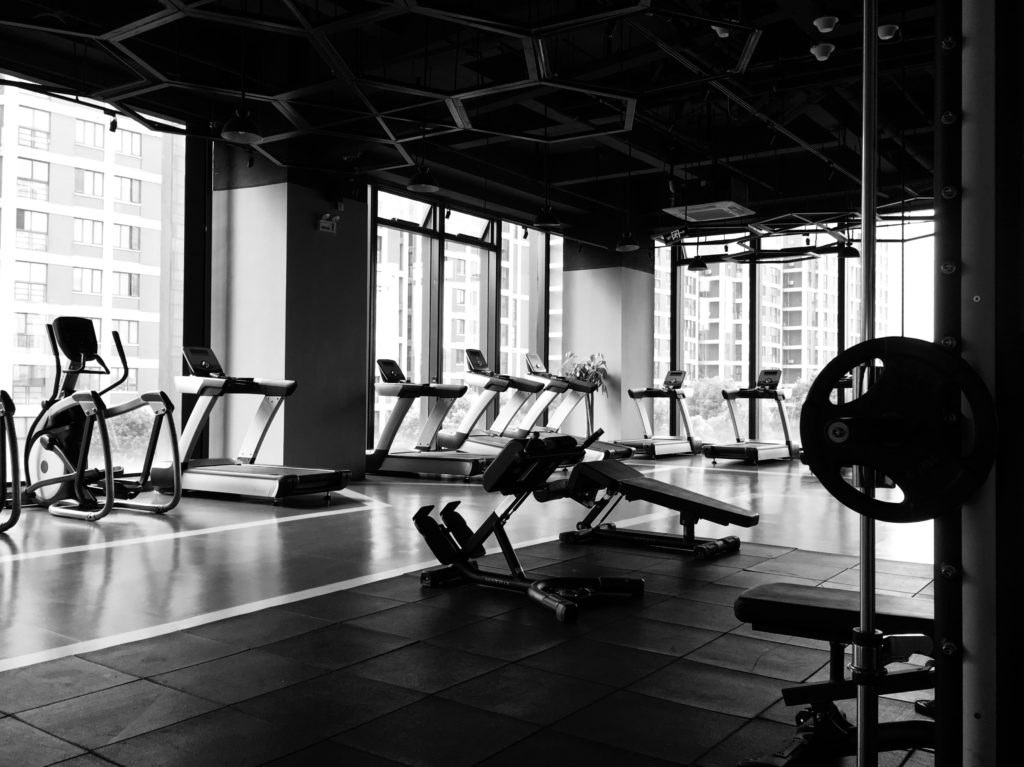How Long to Rest Between Sets For Muscle Growth?

- Long Rest Periods (2-4 minutes)
- Short Rest Periods (Under 2 minutes)
- How Long Should My Rest Periods Be?
- Track Your Rest Periods
Rest periods are one of the most ignored aspects of training, but getting your rest periods is important for maximizing performance in the gym. If you can make the most out of your training, you can build your body faster and more effectively.
Everyone asks how many sets and reps to do for each exercise , but never how long they should rest between sets.
Very few people even track their rest periods at all.
When I provide training programs for clients I always include rest periods between sets. I expect them to track their rest periods in some way, whether that be with their watch, stopwatch on their phone, looking at a clock, it’s not hard.
Many people make the mistake of taking rest periods that are too short. Sometimes too long, and most people are very inconsistent with their rest periods.
I understand that sometimes you run into people at the gym and stop and talk. It happens to me too, but do your best to keep your rest periods consistent, and the proper length according to your goals, training style preferences, and the exercise being performed.
Long Rest Periods (2-4 Minutes)
Pros
Longer rest periods of 2-4 minutes allows you to lift more weight for more reps, increasing the total volume and work done in the training session.
Also, if you can lift more weight through a full range of motion, you’ll produce more mechanical tension in the muscle, along with more muscle damage. These are two important components of muscle growth.
Longer rest periods aren’t as psychologically and physiologically taxing. Lots of high effort, heavy lifting with very short rest periods puts the body under a whole lot of stress, more than what’s necessary. The stress hormone cortisol rises from training anyways, but too much isn’t a good thing.
If you take longer rest periods and aren’t as fatigued, it’s less likely your form and technique will suffer. Great form and execution of an exercise will help you avoid injury and work the targeted muscle or muscle groups better.
This study lead by Brad Schoenfeld, one of the top researcher and educators on building muscle and losing fat, found that 3-minute rest periods led to greater increases in muscle strength and size compared to 1-minute rest periods. Exercises were done in the 8-12 rep range, and they performed 7 different exercises, including a back squat and barbell bench press.
Cons
Longer rest periods might not be ideal for you if you’re limited on time and need to get in and out of the gym quick. Longer rest periods means longer workouts.
Some people start to lose that forward push, momentum, or motivation to keep going through their workout if their rest periods are too long for them. They lose focus, and they might not be as effective in the gym. They want to constantly be moving. If this sounds like you, find what’s the longest rest period you can take while still staying focused and not losing that forward momentum in your training. If your rest periods are 2-4 minutes, this is unlikely to happen, but it could. We’re all different and have different preferences when it comes to training. But if you’re taking your sets of heavy compound lifts close to failure (1-3 reps shy) and truly training hard, you’ll need those 2-3 minutes of rest. Besides, we’re talking about hypertrophy training, not strength training where rest periods sometimes go up towards 5 minutes.
Short Rest Periods (Under 2 Minutes)
Pros
Shorter rest periods place the muscle under a lot of metabolic stress. This is the build up of metabolites such lactate, phosphate, and hydrogen ions within the muscle, along with an increase in blood flow to the muscle, making the muscle swell. This is the burn and the pump you feel during some exercises, typically with higher reps and shorter rest periods. All of this leads to a series of anabolic signaling cascades that contribute to muscle growth.
Training with short rest periods can be very useful if you’re short on time and need to get your workout done quickly. Using only short rest periods doesn’t mean you can’t build muscle. It probably isn’t the ideal and most effective approach, but it can still work. Not all of us trying to become a top-tier, world class competitive bodybuilder, so do what’s more practical and effective for you. A great workout with 1 minute to 90 second rest periods start to finish certainly beats no workout at all.
As I mentioned earlier, some people just don’t prefer longer rest periods. They lose focus and they always want to be moving. If that’s your training style preference and that’s what has you coming back to the gym for more, then short rest periods might be a great choice for you. If you’re not enjoying your training, you’ll probably have a hard time staying consistent and your effort in the gym might not be 100%. So it’s important to enjoy what you do in the gym.
This study compared differences in muscle hypertrophy and strength when performing normal sets vs. drop sets of a cable tricep pushdown. A drop set is when you complete a set of an exercise, immediately lower the weight, and continue performing the exercise—very short rest periods. At the end of the study, the drop set group gained more muscle.
Cons
Shorter rest periods could make it much more challenging to maintain performance as the workout goes on and fatigue quickly accumulates. There’s a good chance you won’t be able to lift as much weight for as many reps. This leads to a drop in volume (Volume = Weight x Sets x Reps). Adequate amounts of training volume is a must for building muscle.
Shorter rest periods can also result in more cortisol production, especially when doing high-volume training. This is fine in moderate amounts, cortisol production increases with training anyways, but it can become a problem when cortisol is too high too frequently. If you’re training 5 days a week and every workout every week consists of very short rest periods, and a high level of effort, you might find that fatigue throughout the week accumulates faster than if you were taking longer rest periods. Too much fatigue accumulation can hamper your performance in future training sessions. It’s important to recover and be well rested so you can give each workout your all.
Also, there’s a greater chance of your form and technique falling apart from being too fatigued. If your form falls apart, there’s a good chance you won’t be working the muscle the best you can, and you increase your chance of injury.
How Long Should My Rest Periods Be?
When your goal is muscle hypertrophy (increasing muscle size) include both shorter and longer rest periods in your training.
Both longer and shorter rest periods have been shown to be effective for building muscle. There’s a time and place where each should be used.
Typically, you’ll want to take 2-4 minutes on multi-joint compound exercises. You’ll probably be better off with 3-4 minutes rest for exercises like barbell back squat, deadlift, barbell bench press, barbell rows, and barbell overhead press. You might take more like 2-2.5 minutes between sets for other compounds like lat pulldowns, cable rows, pull-ups, and dips. More weight can be used on these exercises, multiple muscle groups are working together at once, and they are much more demanding on the body–both physiologically and psychologically. So they require more rest between sets.
For isolation exercises, or single joint movements like tricep pushdowns, leg extensions, bicep curls, and lateral raises, rest periods will often be under 2 minutes. usually 60 seconds to 2 minutes tops. In some cases like a drop set, you might take no rest at all, just the time it takes for you to change the weight. Not as much weight is being used on these exercises and they aren’t as demanding on the body. You can take shorter rest periods between sets, and still hit the sets and reps you’re aiming for without feeling completely wiped out.
If you were to try to complete 4 sets of 8 reps with 70-75% of your 1-rep max on barbell back squats with only 1 minute rest, you’d have a really difficult time trying to complete every set. If you did 4 sets of 8-12 reps on cable curls, 60-90 seconds might be all you need between sets.
Your total volume for that exercise would be much lower, and your sets would probably look something like this:
- 1st set: 8 reps
- 2nd set: 6 reps
- 3rd set: 5 reps
- 4th set: 4 reps
If you took 3 minutes rest between sets, you’d probably be able to get all 4 sets of 8 reps, resulting in more volume.
On an exercise like leg extensions, you’d probably be able to complete all 4 sets of 8 reps with 1 minute rest, assuming the first set isn’t taken to failure, and more like an RPE (Rating of Perceived Exertion) of 7, or RIR (Reps in Reserve) 3.
So, to sum it up:
- Use longer rest periods (2-3 minutes) for more demanding multi-joint, compound movements.
- Use shorter rest periods (under 2 minutes) for less demanding single-joint, isolation exercises.
Track Your Rest Periods
Keeping track of rest periods is also important because you can change your rest periods as a form of progress.
If you’re doing leg extensions and taking 2 minute rest between sets, and 4 weeks later you’re performing the same number of sets and reps with the same amount of weight, but you’re taking 90 second rest between sets, you’re now doing the same amount of work, but in less time. That’s progress.
Also, you want to keep your rest periods consistent. Your progress, true progress, will be difficult to track if one week you take 90 seconds rest on your first set, 2 minutes the next, and 3 minutes the third set, and then 90 seconds on the last set. Then the next week you take 3 minutes rest the first set, 90 seconds the second set, then 2 minutes, then 1 minute on the last set. Your rest periods all over the place.
Keep your rest periods consistent so you can get a more accurate picture of whether you’re actually progressing or not, and as I mentioned earlier, you can always reduce rest periods while performing the same number of sets and reps with the same weight to increase training density, performing the same amount of work in less time—a form of progress. Progress in the gym eventually leads to physical changes in the body that you’re looking for.
Track your rest periods. You probably have your phone on you at the gym while you train. Use the stopwatch feature. Very little extra effort involved, but it will improve your training.
